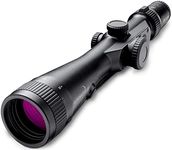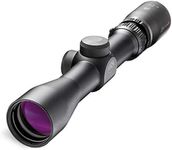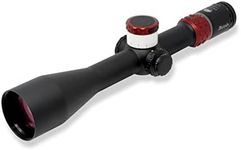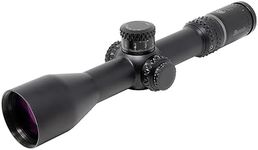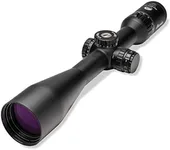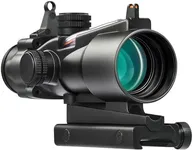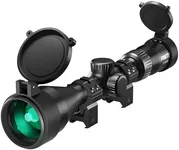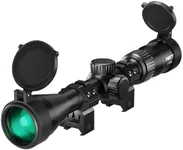Buying Guide for the Best Burris Rifle Scopes
Choosing the right rifle scope can significantly enhance your shooting experience, whether you're hunting, target shooting, or engaging in tactical operations. The right scope will improve your accuracy, range, and overall performance. To make an informed decision, it's important to understand the key specifications and how they align with your specific needs and preferences.MagnificationMagnification refers to how much closer the target appears through the scope compared to the naked eye. This is crucial because it determines how well you can see your target at various distances. Scopes typically come with fixed or variable magnification. Fixed magnification scopes are simpler and more durable, while variable magnification scopes offer flexibility for different shooting ranges. For close-range shooting (under 100 yards), a lower magnification (1-4x) is sufficient. For medium-range (100-300 yards), a mid-range magnification (4-9x) is ideal. For long-range shooting (beyond 300 yards), higher magnification (10x and above) is necessary. Choose based on the typical distance you will be shooting.
Objective Lens DiameterThe objective lens diameter is the size of the front lens of the scope, measured in millimeters. This spec is important because it affects the amount of light that enters the scope, impacting the brightness and clarity of the image. Larger objective lenses (40mm and above) allow more light, which is beneficial in low-light conditions but can make the scope heavier and bulkier. Smaller objective lenses (under 40mm) are lighter and more compact but may not perform as well in dim lighting. Consider where and when you will be using the scope to determine the right size for you.
ReticleThe reticle, or crosshair, is the aiming point you see when looking through the scope. Different reticle designs serve different purposes. Simple crosshairs are great for general use, while more complex reticles with hash marks or dots can help with range estimation and bullet drop compensation. Illuminated reticles are useful in low-light conditions. Choose a reticle that matches your shooting style and needs. For example, hunters might prefer a simple reticle for quick target acquisition, while long-range shooters might benefit from a more detailed reticle.
Eye ReliefEye relief is the distance between your eye and the scope at which you can see the full field of view. This is important for comfort and safety, especially with high-recoil rifles. Scopes with longer eye relief (3.5 inches and above) are better for high-recoil firearms, as they reduce the risk of the scope hitting your face. Shorter eye relief (under 3.5 inches) can be acceptable for low-recoil rifles. Consider the type of rifle you will be using and your comfort level when choosing the eye relief.
Field of ViewField of view (FOV) is the width of the area you can see through the scope at a specific distance, usually measured in feet at 100 yards. A wider FOV allows you to see more of the surrounding area, which is beneficial for tracking moving targets and situational awareness. Lower magnification scopes generally offer a wider FOV, while higher magnification scopes have a narrower FOV. If you need to track fast-moving targets or require a broad view of your surroundings, opt for a scope with a wider FOV. For precision shooting at long distances, a narrower FOV may be acceptable.
Parallax AdjustmentParallax adjustment helps to eliminate the parallax error, which occurs when the reticle appears to move in relation to the target when you move your head. This is important for maintaining accuracy, especially at longer distances. Scopes with parallax adjustment allow you to fine-tune the focus for different distances, ensuring the reticle stays on target. If you plan to shoot at varying distances or require high precision, a scope with parallax adjustment is beneficial. For fixed-distance shooting, this feature may be less critical.
Durability and Weather ResistanceDurability and weather resistance are crucial for ensuring your scope can withstand harsh conditions and rough handling. Look for scopes that are waterproof, fog-proof, and shockproof. These features ensure that the scope remains functional in various weather conditions and can handle the recoil of your rifle. If you plan to use your scope in challenging environments or during adverse weather, prioritize these durability features to ensure reliability and longevity.
